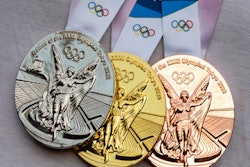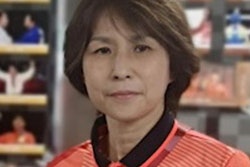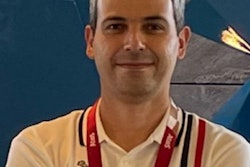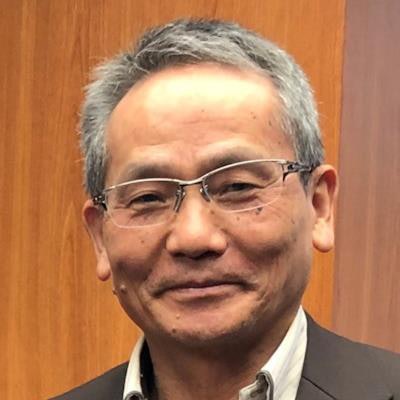
Over 200 MRI exams were performed in the polyclinic during the first week of the Tokyo Olympics, and 90% of these scans were for suspected musculoskeletal (MSK) injuries, chief radiologist Dr. Yukihisa Saida has revealed.
Nearly 30 MRI exams are being carried out daily at the Games, and the number of MRI scans is likely to exceed 600 during the Olympics and 300 during the Paralympics, he told AuntMinnieEurope.com.
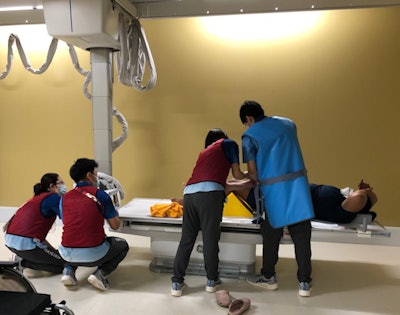 A team of 75 radiographers are working at the Olympic Village. Image courtesy of Dr. Yukihisa Saida.
A team of 75 radiographers are working at the Olympic Village. Image courtesy of Dr. Yukihisa Saida.The total number of radiologists working at Tokyo 2020 is 23, and two or three radiologists work on an average day. The equivalent number of radiographers is 75, of whom eight or nine work each day.
"Training was performed before the opening of Olympic Village by actual use and direct handling of MRI machines and PACS machines, as well as by online explanation and introduction. All member participants are from Japan," Saida commented.
Two MRI machines have been installed at the polyclinic: the 1.5T Signa Explorer and 1.5T Signa Voyager, both from GE Healthcare. The company has also supplied a Discovery XR656HD digital x-ray system and six Logiq e Premium Pro ultrasound units. CT is not installed within the village, but it is available nearby.
The main change compared with the 2016 Games in Rio has been to improve connectivity. The electronic medical record and PACS were strengthened by using patient identifier numbers.
Decades of experience
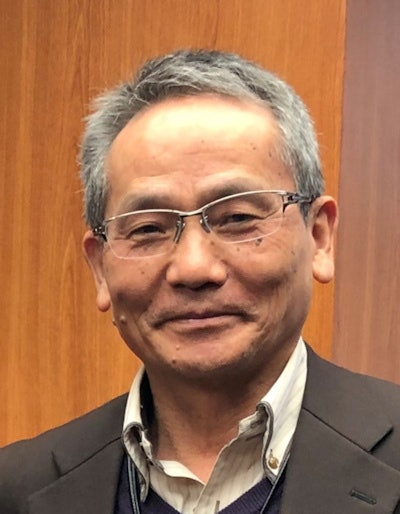 Dr. Yukihisa Saida.
Dr. Yukihisa Saida.Saida worked as project professor in the Department of Diagnostic Imaging and Nuclear Medicine at the Tokyo Medical and Dental University from 2015 to 2021, and he was director of diagnostic radiology at St. Luke's International Hospital, Tokyo between 2005 and 2014.
He was a radiologist at the University of Tsukuba, Ibaraki, Japan, from 1982 to 2004, and he worked in the department of radiology at Nuremberg City Hospital and the Technical University of Munich, Germany, between 1978 and 1982.
"My favorite diagnostic fields are chest and upper abdomen, but I know many expert MSK radiologists in Japan as well as in the U.S. and in Germany. Now at the Olympic Village, I am mainly conducting management of radiological activities," he said.
Saida has a keen interest in sport, being an active member of a regional senior amateur soccer team.
"Sport is a culture, and all people are friends, I think," he said. "For me, the Olympic Games are so exciting and interesting, and they always remind me of Ancient Rome and the Greek era, where we can touch a fundamental feeling of strength and existence of human beings. All the athletes are so cheerful and humanistic."
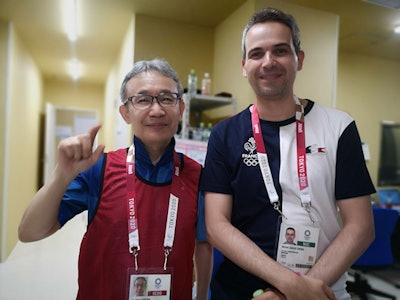 Emeritus Prof. Kunihiko Fukuda, former chair of radiology at The Jikei University School of Medicine, is working at the Olympic Village as a volunteer radiologist in charge of MRI reporting. He is shown here with radiologist Dr. Michel Crema, who is working with the French National Team at the Games. Image courtesy of Emeritus Prof. Kunihiko Fukuda.
Emeritus Prof. Kunihiko Fukuda, former chair of radiology at The Jikei University School of Medicine, is working at the Olympic Village as a volunteer radiologist in charge of MRI reporting. He is shown here with radiologist Dr. Michel Crema, who is working with the French National Team at the Games. Image courtesy of Emeritus Prof. Kunihiko Fukuda.Saida noted that Dr. Bruce Forster, professor and head of radiology at the University of British Columbia, was a frequent visitor to Tokyo prior to the 2020 Games and has given advice to the Japanese team. Foster was director of diagnostic imaging for the Vancouver 2010 Winter Olympic/Paralympic Games and is currently president of the Canadian Radiologic Foundation.
Going for gold
More than 11,000 athletes are competing at 42 different venues at Tokyo 2020, and there are 339 medal events in total. Five new sports have been added to the schedule: karate, skateboarding, sport climbing, softball/baseball, and surfing.
Nearly 60 different medical devices have been installed for the Games, according to GE. The company's Japanese technicians were supported by Hungarian colleagues who built the Athlete Management System. The vendor's latest portable ultrasound offering, the Vscan Air, is also being used.
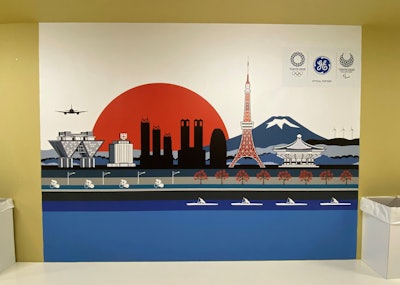 This poster of Tokyo 2020 hangs on the wall of the polyclinic in the Olympic Village. Photo courtesy of General Electric.
This poster of Tokyo 2020 hangs on the wall of the polyclinic in the Olympic Village. Photo courtesy of General Electric.According to an internal company memo, "Radiological technologists can initiate scans without the need to manually enter the athletes' data. The reading radiology doctors can also review the request and the progress of the scan, and promptly prepare a diagnostic report to return to the requesting clinicians. This is an essential system not only to ensure athletes' health but also to enable multilingual support and collaboration with other professionals."
The closing ceremony takes place on 8 August. The Paralympics lasts from 24 August to 5 September.





